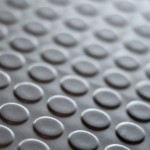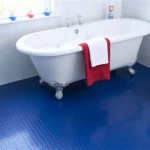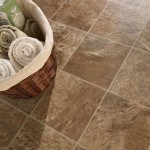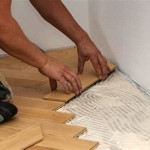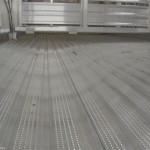What Type Of Underlayment For Vinyl Plank Flooring On Concrete
Vinyl plank flooring has gained significant popularity as a durable and aesthetically pleasing flooring option for both residential and commercial spaces. Its water resistance, ease of installation, and wide range of styles make it an attractive alternative to traditional hardwood or tile. When installing vinyl plank flooring over concrete, choosing the correct underlayment is crucial for achieving optimal performance, longevity, and comfort. Concrete subfloors present unique challenges, including moisture, unevenness, and cold temperatures, all of which an appropriate underlayment can mitigate.
Understanding the role of underlayment is paramount before selecting a specific product. Underlayment acts as a buffer between the concrete slab and the vinyl plank flooring. It provides several key functions, including moisture protection, sound reduction, cushioning, and leveling. Selecting the right underlayment depends on several factors, including the specific type of vinyl plank being used, the condition of the concrete subfloor, and any specific performance requirements of the space, such as acoustic insulation.
Moisture Protection
Concrete is a porous material that can absorb and transmit moisture from the ground. This moisture can damage vinyl plank flooring over time, leading to warping, buckling, and mold growth. Therefore, moisture protection is a critical consideration when selecting underlayment for vinyl plank flooring installed over concrete.
Some underlayments come with an integrated moisture barrier, typically a thin layer of plastic film or a specialized coating. These barriers prevent moisture from migrating upwards from the concrete into the vinyl planks. When selecting an underlayment with a built-in moisture barrier, it is important to ensure that the barrier meets or exceeds the manufacturer's recommendations for the specific vinyl plank flooring being used. It is also essential to properly seal seams and edges of the underlayment using moisture-resistant tape to create a continuous barrier.
If the underlayment does not have an integrated moisture barrier, a separate moisture barrier can be installed between the concrete and the underlayment. This often involves laying down a polyethylene film with overlapping seams that are taped together. The thickness of the polyethylene film is typically specified by the flooring manufacturer and should be carefully followed to ensure adequate moisture protection.
Before installing any underlayment or moisture barrier, it is advisable to test the concrete slab for moisture content. This can be done using a calcium chloride test or a relative humidity probe. These tests provide an indication of the amount of moisture present in the concrete, which can help determine the need for additional moisture mitigation measures.
If the moisture content is high, it may be necessary to apply a concrete sealer or waterproofing membrane to the concrete slab before installing the underlayment. These products create a barrier that prevents moisture from rising through the concrete and damaging the flooring. Professional installation of these sealers is often recommended to ensure proper application and effectiveness.
Leveling Imperfections
Concrete subfloors are rarely perfectly level. Minor variations in the surface are common, and these imperfections can telegraph through the vinyl plank flooring, creating an uneven and unsightly appearance. Underlayment can help to mitigate these imperfections and provide a smoother surface for the vinyl planks.
Thicker underlayments generally offer better leveling capabilities. However, it is important to consult the vinyl plank flooring manufacturer's recommendations to ensure that the chosen underlayment thickness is compatible with the flooring system. Using an underlayment that is too thick can create instability and lead to issues with the locking mechanisms of the vinyl planks.
Some underlayments are specifically designed for leveling purposes. These products are typically made from dense materials like cork or rubber and have a higher compression resistance than standard underlayments. They can effectively bridge small gaps and irregularities in the concrete surface, creating a more even and stable foundation for the vinyl planks.
For significant leveling issues, a self-leveling compound may be required before installing the underlayment. Self-leveling compounds are cement-based mixtures that are poured onto the concrete surface and allowed to flow and harden, creating a perfectly level plane. This is typically a more involved process and often requires professional installation to ensure proper results. It is critical to allow the self-leveling compound to fully cure and dry before proceeding with the underlayment and flooring installation.
When installing underlayment over an uneven concrete floor, it is important to carefully inspect the surface for any protruding nails, screws, or other debris. These objects should be removed before installing the underlayment to prevent them from puncturing the material and compromising its effectiveness. The concrete surface should also be thoroughly cleaned to remove any dust, dirt, or grease that could interfere with the adhesion of the underlayment.
Sound Reduction
Concrete floors can transmit sound easily, especially impact noise from footsteps or dropped objects. Installing underlayment with sound-reducing properties can significantly improve the acoustic comfort of a space. This is particularly important in multi-story buildings or apartments where noise transmission can be a major concern.
Underlayments with a high Sound Transmission Class (STC) rating and Impact Insulation Class (IIC) rating are most effective at reducing sound transmission. The STC rating measures the amount of airborne sound that is blocked by the flooring assembly, while the IIC rating measures the amount of impact noise that is reduced. Higher ratings indicate better sound reduction performance.
Materials like cork, rubber, and foam are commonly used in sound-reducing underlayments. These materials have inherent damping properties that absorb and dissipate sound waves, reducing the amount of noise that is transmitted through the floor. The thickness of the underlayment also plays a role in sound reduction, with thicker underlayments generally providing better performance.
When selecting an underlayment for sound reduction, it is important to consider the specific needs of the space. In areas where noise is a major concern, such as apartments or offices, an underlayment with high STC and IIC ratings is recommended. In less sensitive areas, a standard underlayment with moderate sound-reducing properties may be sufficient.
The effectiveness of sound-reducing underlayment can be further enhanced by using other soundproofing measures, such as installing acoustic ceiling panels or using sound-absorbing furniture. These measures can help to create a quieter and more comfortable environment.
It's also worth noting that the type of vinyl plank flooring being used can also impact sound transmission. Some vinyl planks are specifically designed with sound-absorbing properties, and these planks can be combined with sound-reducing underlayment for optimal acoustic performance.
When installing underlayment for sound reduction, it is important to pay attention to detail and ensure that all seams and edges are properly sealed. Gaps or cracks in the underlayment can allow sound to leak through, reducing its effectiveness. Acoustic sealant can be used to seal any gaps or cracks and create a continuous sound barrier.
In summary, selecting the right type of underlayment for vinyl plank flooring on concrete is a multi-faceted decision that requires careful consideration of moisture protection, leveling capabilities, and sound reduction properties. By understanding these key factors and consulting with the vinyl plank flooring manufacturer, it is possible to choose an underlayment that will provide optimal performance, longevity, and comfort for the flooring system.
Different types of underlayment materials offer varying degrees of performance in each of these key areas. Common underlayment materials for vinyl plank over concrete include:
- Foam Underlayment: Typically made of polyethylene or polyurethane foam, offering good cushioning and sound absorption. Often comes with a built-in moisture barrier.
- Cork Underlayment: A natural and sustainable option with excellent sound and thermal insulation properties. Offers moderate moisture resistance.
- Rubber Underlayment: Provides superior impact sound reduction and leveling capabilities. Can be more expensive than other options.
- Combination Underlayment: These products combine different materials, such as foam and moisture barrier, to offer a balance of performance benefits.
The specific choice will depend on the individual project requirements and budget constraints. Consulting with a flooring professional can provide valuable guidance in selecting the most appropriate underlayment for the specific application.

What Type Of Underlay For Vinyl Flooring On Concrete

Choosing Underlayment For Vinyl Plank Flooring Your Ultimate Guide Jona Panel S Inc

How To Prepare A Concrete Floor For Vinyl Flooring Parrys

Lvp Flooring Installation Over Concrete Subfloor Full Instructional Builds By Maz Flooret

Flooring Underlayment Guide

Do I Need Underlayment For Vinyl Plank Flooring

Underlayment For Vinyl Plank Flooring Introducing Soundbuffer

Underlayment For Vinyl Flooring The Only Guide You Need Floor City

How To Prep Wood Subfloor For Luxury Vinyl Plank Flooring Beginners Fix High And Low Spots

Do I Need An Underlayment For Vinyl Flooring Lx Hausys
Related Posts

